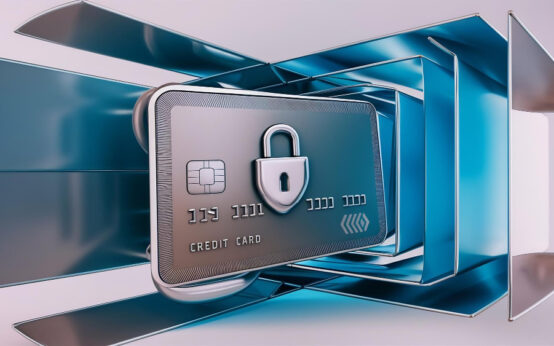Finding the best credit cards for gas and groceries can be a game-changer for your savings. Not only do these cards offer rewards, but they also come with cashback opportunities on everyday purchases. In this blog post, we’ll delve into the benefits, top options, and strategies to maximize your rewards.
Benefits of Using Credit Cards for Gas
Saving on Fuel Costs: Many credit cards offer cashback or reward points for gas purchases. You can save a significant amount on everyday fuel expenses.
Convenience: Using a credit card at the pump allows for quick and easy payment without needing to carry cash.
Building Credit: Consistent use and timely payments of your credit card for gas purchases can help improve your credit score.
Tracking Expenses: Credit card statements provide a clear record of your gas spending, making it easier to budget and manage finances.
Additional Perks: Many credit cards offer additional benefits like roadside assistance, travel insurance, or extended warranties.
Security: Credit cards often come with fraud protection, which is safer compared to using debit cards or cash.
Zero Interest Promotions: Some credit cards come with introductory 0% interest rates, allowing you to pay off large fuel expenses over time without extra cost.
Top Credit Cards for Grocery Purchases

When choosing a credit card for grocery purchases, it’s essential to find one that offers the best rewards and cashback options. Many reward credit cards offer higher points for groceries, making them highly beneficial for everyday shopping.
Some of the top cards include the Blue Cash Preferred® Card from American Express, which provides an impressive 6% cashback at U.S. supermarkets. Similarly, the Chase Freedom Flex℠ allows users to earn 5% cashback on select rotating categories, including groceries during certain quarters.
The Capital One® SavorOne® Cash Rewards Credit Card is another excellent option, offering 3% cashback on groceries, dining, and entertainment. For those who prefer a no-annual-fee card, the Bank of America® Customized Cash Rewards credit card offers 2% cashback, which increases with combined total purchases in specific categories.
Comparing these cards based on factors such as annual fees, interest rates, and additional perks can help determine which is the best fit for your grocery shopping needs. By leveraging the right credit card, you can maximize your savings on every grocery purchase.
How to Maximize Rewards and Cashback
To fully leverage rewards and cashback opportunities, using the right credit card strategically can result in significant savings. First, identify credit cards that offer higher rewards for gas and grocery purchases. Many credit cards provide bonus points or extra cashback for specific categories, making these purchases more rewarding.
Next, keep track of any rotating categories. Some cards offer higher rewards for certain categories that change quarterly. Knowing when your grocery store or gas station is in a bonus category can maximize your earnings.
Also, take advantage of sign-up bonuses. Many credit cards offer substantial rewards or cashback when you spend a certain amount in the first few months. Timing your significant expenditures, like groceries or fuel, during this period can help you meet these targets easily.
Another key strategy is to combine the use of your card with store-specific discount programs. Some stores offer their own rewards or loyalty points, which can be stacked with your credit card rewards for maximum savings.
Monitor your statements closely. This will ensure you’re earning the correct rewards and can catch any discrepancies early. Additionally, redeem your rewards strategically. Some issuers provide better value for certain redemption options.
Using these strategies will help you make the most out of your credit cards for gas and groceries, helping you save more money over time.
Understanding Credit Card Fees and Rates

Credit cards can come with a variety of fees and rates that can impact the overall cost of using them. Understanding these fees is crucial to making an informed decision when selecting a card, especially if you aim to maximize savings on gas and grocery purchases.
Common fees include annual fees, which are charged yearly for holding the card, and balance transfer fees, which apply when transferring a balance from one card to another. Additionally, there are foreign transaction fees for purchases made outside your home country and cash advance fees for withdrawing cash using your credit card.
Besides fees, it’s important to consider the interest rates. The Annual Percentage Rate (APR) is the interest rate charged if you carry a balance from month to month. There are typically different APRs for purchases, balance transfers, and cash advances.
Penalty APR
is another rate to be aware of, which may apply if you miss a payment. This rate is often significantly higher than the standard APR.
To minimize costs, always review the terms and conditions of any credit card. Look for cards that offer low or no annual fees, especially if you plan to use the card mainly for everyday purchases like gas and groceries. Additionally, consider the reward rates and cashback offers, as some cards provide higher rewards for these categories, which can further offset any fees you might incur.
Tips for Choosing the Right Credit Card
When it comes to choosing the right credit card, it’s essential to consider your spending habits and financial goals. Start by evaluating where you spend the most money – is it on gas, groceries, or something else? Many credit cards offer unique benefits tailored to specific spending categories.
Examine Rewards and Cashback Options
Different credit cards offer varied rewards structures. Some provide higher cashback percentages on gas and grocery purchases, which can significantly add up over time. It’s crucial to read the fine print and understand the rewards system. Look for cards that offer at least 3% back on these essential purchases.
Consider Annual Fees and Interest Rates
While some cards come with no annual fees, they might offer lower rewards rates. However, if you drive a lot or have a large family, a card with a higher annual fee but better rewards might be worth it. Also, compare the interest rates, especially if you expect to carry a balance from month to month.
Check if the card offers additional perks like roadside assistance, rental car insurance, or purchase protection. These can be valuable extras that enhance the utility of your credit card beyond just saving on gas and groceries.
Remember to review your credit score before applying for a new card. Some of the best rewards cards require a good to excellent credit score. Keeping your utilization low and paying your bills on time can improve your chances of approval.
Lastly, read user reviews and do a comparative analysis. Sometimes the best insights come from other users who have already tried and tested the card. Make an informed decision to ensure you maximize the benefits of using your credit card for gas and groceries effectively.



 Best credit cards secured: your path to a stronger credit history <p style='text-transform:none; line-height:20px !important; font-size:16px; font-weight:normal; color:#424242; margin: 0px; margin-top:10px;'>They offer a smart way to show lenders you’re serious about managing your finances.</p>
Best credit cards secured: your path to a stronger credit history <p style='text-transform:none; line-height:20px !important; font-size:16px; font-weight:normal; color:#424242; margin: 0px; margin-top:10px;'>They offer a smart way to show lenders you’re serious about managing your finances.</p>  The best credit cards for lounge access: your key to premium airport comfort <p style='text-transform:none; line-height:20px !important; font-size:16px; font-weight:normal; color:#424242; margin: 0px; margin-top:10px;'>With these cards, you have exclusive access to lounges, offering comfort while you wait for your flight.</p>
The best credit cards for lounge access: your key to premium airport comfort <p style='text-transform:none; line-height:20px !important; font-size:16px; font-weight:normal; color:#424242; margin: 0px; margin-top:10px;'>With these cards, you have exclusive access to lounges, offering comfort while you wait for your flight.</p>  Safe, simple, and fun: discover the best debit cards for kids <p style='text-transform:none; line-height:20px !important; font-size:16px; font-weight:normal; color:#424242; margin: 0px; margin-top:10px;'>These cards offer the flexibility and convenience that both parents and kids need.</p>
Safe, simple, and fun: discover the best debit cards for kids <p style='text-transform:none; line-height:20px !important; font-size:16px; font-weight:normal; color:#424242; margin: 0px; margin-top:10px;'>These cards offer the flexibility and convenience that both parents and kids need.</p>